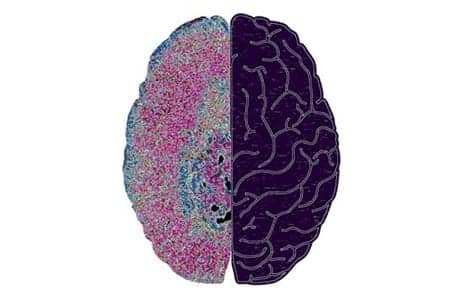
This is a stylized representation of a newly discovered signaling pathway active after spinal cord injury, which sees the injured central nervous system use adrenal hormone production to potentially disrupt the immune system in a way that lead to severe infections. (Photo courtesy of H Prüss and A Thiriot from The Ohio State University Wexner Medical Center)
Stylized representation of a newly discovered signaling pathway active after spinal cord injury, which sees the injured central nervous system use adrenal hormone production to potentially disrupt the immune system in a way that lead to severe infections. (Photo courtesy H Prüss, A Thiriot, The Ohio State University Wexner Medical Center)
Stylized representation of a newly discovered signaling pathway active after spinal cord injury, which sees the injured central nervous system use adrenal hormone production to potentially disrupt the immune system in a way that lead to severe infections.
New research may provide potential therapeutic strategies to help prevent and reduce the incidence of infections among patients with spinal cord injury (SCI) without the use of antibiotics.
Pneumonia is a leading cause of death among these patients, so decreasing their occurrence can have a strong impact on the lives of SCI patients, suggests researchers from The Ohio State University, in their study published recently in Nature Neuroscience.
“Despite its clinical relevance, the underlying mechanisms of how spinal cord injury causes a systemic immune shut down are far from being understood. After 8 years of work, we were able to identify an entirely new mechanism for how spinal cord injury weakens the immune system,” says the study’s principal investigator Dr Jan M. Schwab, in a media release from Ohio State University Wexner Medical Center.
Schwab, a neurologist and physician at Ohio State’s Neurological Institute, collaborated with researchers from several institutes in Germany, along with the University of Alabama in Birmingham, Harvard Medical School and Boston’s Children’s Hospital.
In the study, they demonstrated that susceptibility to spontaneous pneumonia and severe lymphopenia after SCI resulted from a maladaptive sympathetic-neuroendocrine reflex involving the adrenal glands, per the release.
“Based on our findings, we hypothesize that therapeutic normalization of the glucocorticoid and catecholamine imbalance in spinal cord injury patients could be a promising treatment strategy,” Schwab states. “This could lead to new treatments to prevent or reduce infections in patients suffering with these injuries without antibiotics, thereby reducing disability and mortality.”
Disrupting nerve fibers to the adrenal glands by high-level but not low-level thoracic spinal cord transection resulted in almost complete suppression of circulating norepinephrine levels and profound stimulation of systemic corticosterone levels. Identical findings were seen in human patients with traumatic complete SCI, the researchers continue, in the release.
[Source(s): Ohio State University Wexner Medical Center, Science Daily]




